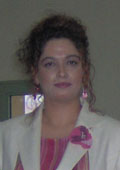 |
Use of Deterministic Simulation in Production Management
October 2006 - IAS Turkey

With accelerated advances in technology, a new age has dawned for those that build and manage new systems. The new age of "Information Management" no longer belongs to organizations that predict the future and react accordingly, but rather to "Organizations of the Future" that shape the future, that play not only according to the rules of the game, but succeed in setting those very rules.
The rapid changes in today's business world have resulted in organizational structures that are complex and business processes that are complicated. In order for organizations to meet ever increasing customer demands, and to be able to survive in an environment where change is inevitable, it is crucial that they offer more reliable delivery dates and control their costs by analyzing them on a continual basis.
For businesses, being capable of delivering high quality goods at low costs and short delivery times is akin to operating in a whirlpool environment like the Devil's Triangle, and this is no easy task for any organization. Managing so that production takes place at the right time, on the right equipment, and using the right tools will minimize any deviations in delivery dates promised to the customer. Utilizing equipment, personnel and tools to their maximal efficiency will no doubt improve any organization's competitive strength. In return, proper utilization of these capabilities will result in lower costs for the organization.
Optimal scheduling of jobs on equipment, without the use of computer software, is a truly difficult undertaking. Performing planning using the "Deterministic Simulation Method" will provide you with schedules that will indicate job loads per equipment. Even in the case limited to a single piece of equipment, as the number of jobs to schedule on that equipment increases, finding the right solution in the "Possible Solutions Set" becomes next to impossible. And in the real world, the difficulties arising from the large size of the solutions set due to the recipes formed by jobs, equipment and products, and shaped by the technological restrictions, as well as the complexity in finding a close to ideal solution, are readily apparent.
As the number of jobs to be scheduled increases, the complexity of the task at hand increases exponentially. Heuristic algorithms can be utilized to find the close to ideal solution. These algorithms have the following characteristics:
- Equipment efficiency is maintained at maximal levels by minimizing the length of time jobs stay on the shop floor.
- Jobs may be scheduled to complete "just in time" before delivery to customer.
- The job schedules may be manipulated by management based on changing customer priorities.
- Production of similar products may be scheduled sequentially to use the same equipment, to minimize the pre-production activities related to equipment setup.
- Jobs already in production lines may be re-ordered based on changes in or cancellations of customer orders.
- Jobs may be scheduled based on tools and skilled personnel called for by the production specifics.
- Customers can be notified in situations where orders will not be completed by promised delivery dates.
- Management can be advised on how to affect capacity increases in case of repeated delays to promised customer delivery dates.
- Most importantly, customers can be provided with more realistic initial delivery dates at the time of order acceptance, by examining the loads on production lines.
Research and studies are being conducted worldwide on the subject of scheduling. Software vendors working in this area follow developments closely, and they are coming out with new products to better meet demands. "Genetic Algorithms", "Artificial Intelligence", and "Neural Networks" are some of the technologies being used for scheduling. I would like to close by quoting from Tom Peters, a leading management guru: "When you think you've reached the top, tear down everything and do it all over again. If you don't, your competitor will." To this, I would like to add my own: "If your competitor won't, new investors will enter the market segment who will do the same job better."
Nukhet Tuncbilek
University of Kultur - Instructor
Senior Software Engineer - IAS Turkey
www.ias.com.tr
|
 |

